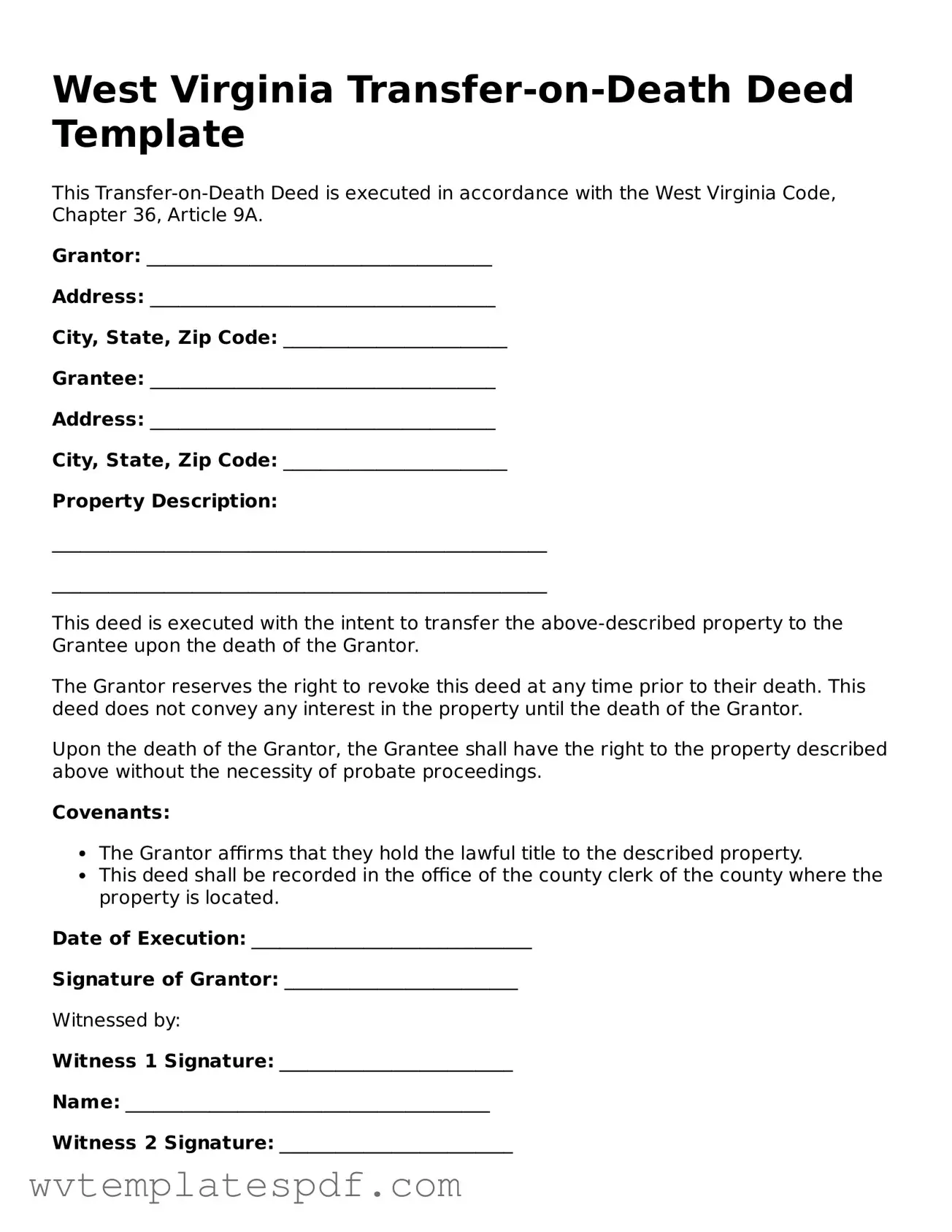Filling out a Transfer-on-Death (TOD) Deed in West Virginia can be a straightforward process, but there are common mistakes that individuals often make. These errors can lead to confusion or even legal complications down the line. Understanding these pitfalls can help ensure that the deed is completed correctly and serves its intended purpose.
One frequent mistake is failing to include all required information. The form requires specific details such as the names and addresses of both the grantor and the beneficiary. Omitting any of this information can render the deed invalid. It’s essential to double-check that all fields are filled out completely before submission.
Another common error is not properly identifying the property. The deed must clearly describe the property being transferred. This includes the legal description, which can often be found on the property’s current deed. Using vague descriptions can lead to disputes later on, so precision is key.
People also sometimes forget to sign the deed. In West Virginia, the grantor must sign the document in the presence of a notary public. Not obtaining a notarization can invalidate the deed, making it crucial to follow this step carefully.
Additionally, individuals may overlook the need for witnesses. In some cases, having witnesses sign the deed can add an extra layer of validity. Failing to include witnesses when required can complicate the transfer process later.
Another mistake is neglecting to record the deed with the appropriate county clerk’s office. After completing the form, it must be filed with the local government to ensure that the transfer is legally recognized. Skipping this step can leave the property in a state of limbo.
People often misinterpret the implications of the TOD Deed. Some assume that it operates like a will, but it is important to understand that the TOD Deed transfers ownership immediately upon the grantor's death. This distinction can impact estate planning strategies, so clarity on this point is vital.
Furthermore, individuals may not consider the tax implications of a Transfer-on-Death Deed. While the transfer can avoid probate, it may still have tax consequences that need to be addressed. Consulting with a tax professional can provide insight into any potential liabilities.
Lastly, many overlook the importance of updating the deed after significant life events. Changes such as marriage, divorce, or the death of a beneficiary necessitate a review and possible revision of the deed. Keeping the document current ensures that it reflects the grantor's wishes accurately.
By being aware of these common mistakes, individuals can approach the completion of the West Virginia Transfer-on-Death Deed with confidence. Taking the time to fill out the form correctly can prevent future complications and ensure a smooth transfer of property.
